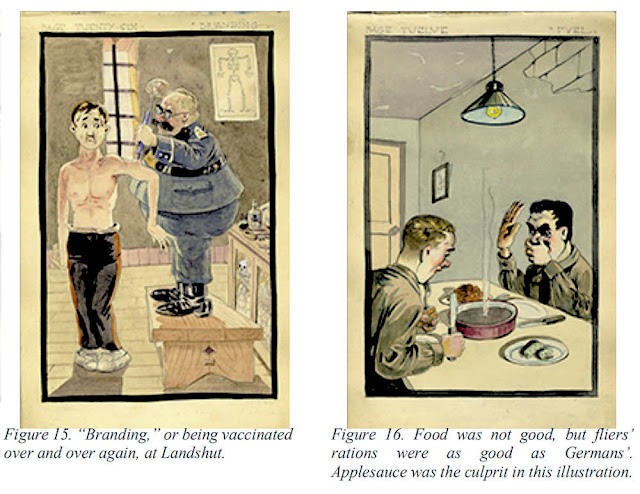All Images Can Be Enlarged by Clicking on Them
Guy Brown Wiser was born on 10 February 1895 in Marion, Indiana. Wiser was a graduate of Cornell University in 1917. He served in the Air Service as a pilot in World War I. He flew two-place, single-engine biplane De Havilland DH-4 bombers on combat missions during the late-war St. Mihiel and Argonne drives. His final mission took place during the Argonne effort, on 26 September 1918. Flying from Maulan to bomb Dun-Sur-Meuse in the company of aircraft from another squadron, the formation was attacked by seven German planes after dropping bombs, and was thereafter engaged, still over German territory, by a much larger enemy force. During the fight, five of the seven U.S. planes were lost, four airmen ended up as prisoners, and seven were killed in action.
Archival holdings at the National Museum of the U.S. Air Force (NMUSAF), near Dayton, Ohio, include a small sketchbook of vivid, amusing watercolors describing a young American airman’s brief captivity as a prisoner of war in Germany at the very end of the First World War. The paintings, by Lt. Guy Brown Wiser, are unusual and instructive. They stand out immediately because of their obvious artistic quality as a colorful tongue-in-cheek record of the American POW experience, and they are instructive because they offer unique insight into how a young American and his comrades interpreted what they did and what happened to them.
After the war he returned to Indiana where he worked for several years as an architect. Wiser traveled to Paris and in 1924 became a student of Jean Despujols. He stayed in Paris for almost two years and when he returned to the United States, he studied in Cape Cod with Charles Hawthorne. Later he attended art classes at Ohio State University.

In 1934 he moved to Los Angeles and taught at Scripps College for two years. Between 1935 and 1957 he illustrated close to 80 books for different publishing companies. Wiser’s figurative paintings of the 1930s are reminiscent of his teacher Jean Despujols; they often depict the utopian images found in the Art Deco paintings of the artists of Bordeaux. His paintings combine classical technique, and his subjects are displayed with lyrical symbolism. During the years 1925-57 he illustrated about 80 books for various book companies. Wiser exhibited at the Painters and Sculptors of Los Angeles exhibition in 1935 and also at the Academy of Western Painters in 1936. He died in Fallbrook, CA, on 30 March 1983.
 |
| The Panther, Wiser's Best-Known Professional Piece |
For an excellent detailed analysis of Wiser's POW art, read the article: "A Heartland Artist as Prisoner: The End Of Guy Brown Wiser's Air War," by Douglas N. Lantry.
Sources: National Museum of the U.S. Air Force; PROCEEDINGS OF ARMISTICE & AFTERMATH: A MICHIGAN TECH SYMPOSIUM ON WWI • SEPT. 28-29 2018





No comments:
Post a Comment